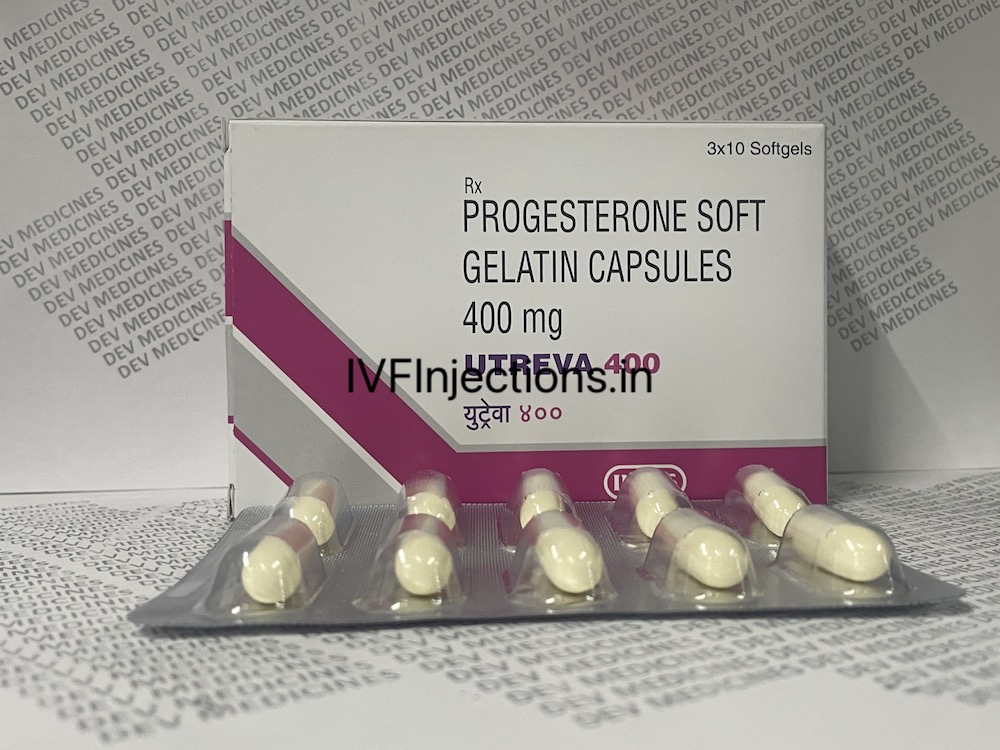Exploring Utreva 400 and Pergoveris 900 in Fertility
Introduction to Fertility Treatments
In the intricate world of reproductive health, advancements in medical science have opened doors for countless individuals longing to build families. Two key players in this field, Utreva 400 and Pergoveris 900, have emerged as vital tools for addressing fertility challenges. These treatments, rooted in hormonal therapy, offer hope to those navigating the often complex journey of conception. This article dives into their roles, mechanisms, and significance, shedding light on how they empower dreams of parenthood with precision and care.
The Science Behind Utreva 400
Utreva 400 represents a cornerstone in hormone replacement and fertility support, harnessing the power of progesterone. This naturally occurring hormone plays an essential role in preparing the body for pregnancy by thickening the uterine lining, creating an optimal environment for embryo implantation. Administered in a carefully calibrated dose, it steps in when the body’s progesterone levels fall short, a common hurdle in certain fertility conditions. By mimicking the body’s own processes, it helps stabilize the reproductive cycle, offering a lifeline for women facing irregular menstruation or challenges in sustaining early pregnancy.
Pergoveris 900: A Dual-Action Fertility Boost
On the other side of the spectrum lies Pergoveris 900, a sophisticated blend of follicle-stimulating hormone (FSH) and luteinizing hormone (LH). These hormones work in tandem to stimulate ovarian follicle growth and
ovulation, critical steps in the conception process. Designed for women who struggle with ovulatory dysfunction, this treatment provides a targeted approach to jumpstart the reproductive system. Its dual-hormone formulation ensures that both egg development and release are supported, making it a powerful ally for those undergoing assisted reproductive techniques like in vitro fertilization (IVF).
How Utreva 400 Supports Conception
The journey to conception often hinges on a delicate balance of hormones, and Utreva 400 excels in maintaining that equilibrium. For women experiencing luteal phase defects—where progesterone production is insufficient post-ovulation—this treatment bridges the gap. It ensures the uterine lining remains robust and receptive, reducing the risk of early miscarriage. Beyond fertility, it also finds use in managing abnormal uterine bleeding or supporting hormone replacement therapy, showcasing its versatility in women’s health. Its role is subtle yet profound, laying the groundwork for successful pregnancies.
The Role of Pergoveris 900 in Ovulation
While Utreva 400 prepares the body to nurture a pregnancy, Pergoveris 900 focuses on the critical first step: producing viable eggs. By stimulating the ovaries, it encourages the maturation of multiple follicles, increasing the chances of successful ovulation. This is particularly beneficial for women with conditions like polycystic ovary syndrome (PCOS) or those who don’t respond well to simpler ovulation-inducing treatments. Administered through injections, it offers a controlled and potent boost, often integrated into fertility protocols to maximize outcomes in clinical settings.
Combining Strengths for Optimal Results
The true magic often happens when treatments like Utreva 400 and Pergoveris 900 are used in harmony. In assisted reproduction, one may stimulate egg production while the other ensures the uterus is primed for implantation. This complementary approach addresses multiple facets of infertility, from ovulation to embryo support, creating a comprehensive strategy. Medical professionals tailor their use based on individual needs, adjusting dosages and timing to align with a patient’s unique hormonal profile. Together, they form a dynamic duo, enhancing the odds of conception for those facing complex fertility challenges.
Challenges and Considerations in Treatment
Despite their benefits, using Utreva 400 and Pergoveris 900 requires careful oversight. Hormonal therapies can sometimes lead to side effects like bloating, mood swings, or injection-site discomfort, though these vary in intensity. Timing is another critical factor—both treatments demand precise administration to align with the body’s natural cycles. Overstimulation of the ovaries, a risk with Pergoveris 900, necessitates monitoring to prevent complications like ovarian hyperstimulation syndrome. Patients and healthcare providers must collaborate closely to navigate these hurdles, ensuring safety and efficacy.
The Future of Hormonal Fertility Solutions
Looking ahead, the evolution of treatments like Utreva 400 and Pergoveris 900 promises even greater precision in fertility care. Advances in personalized medicine could refine how these therapies are dosed, tailoring them to genetic and hormonal markers for better outcomes. Research into minimizing side effects and optimizing delivery methods—perhaps through less invasive techniques—also holds potential. As science progresses, these treatments will likely become even more accessible and effective, offering renewed hope to those on the path to parenthood.


Comments
Post a Comment